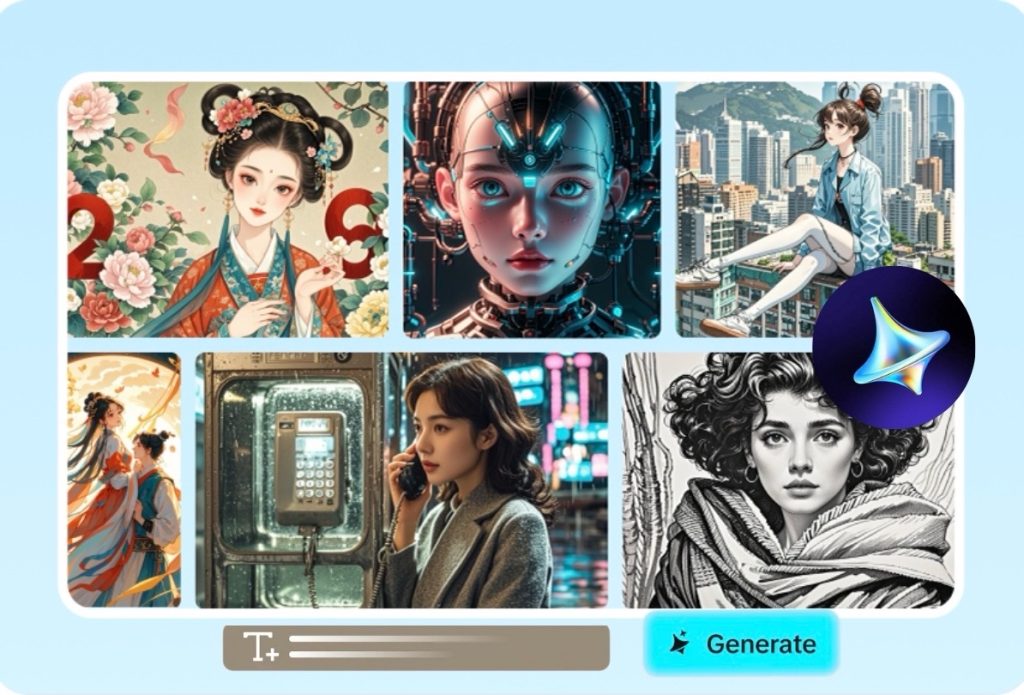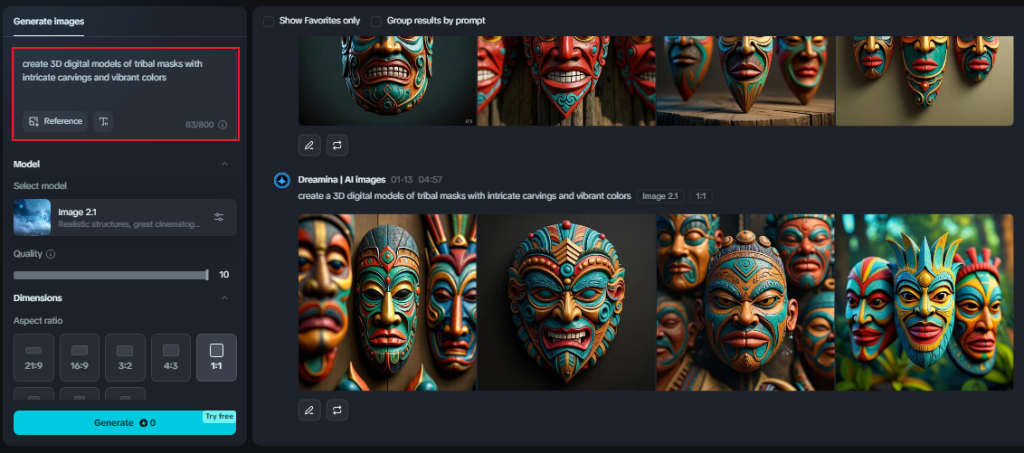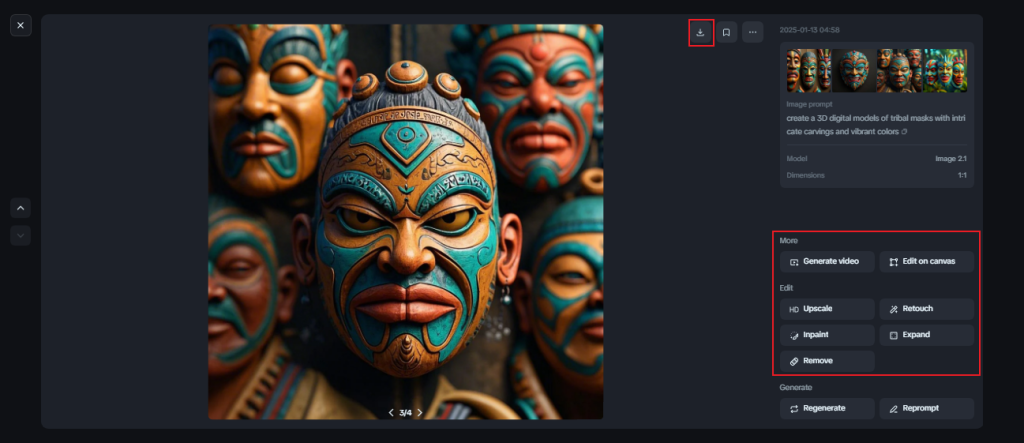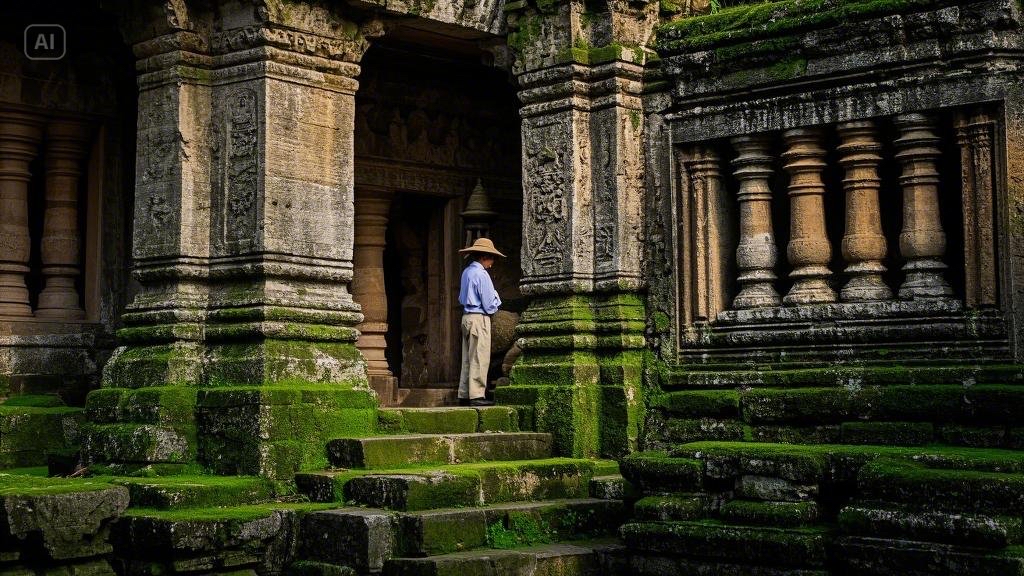AI and Cultural Preservation: Digitizing Heritage Through Art and Design
by Clarence Oxford
Los Angeles CA (SPX) Mar 25, 2025
The customs, artwork, and history that characterize towns and countries are all part of cultural heritage. But maintaining this legacy in a society that is modernizing quickly is becoming more and more difficult. AI has become a potent instrument for cultural preservation, assisting in the digitization, restoration, and reimagining of legacy through creative design and artistic methods.
Cultural institutions may now bring historical relics and designs to life in previously unthinkable ways with the help of tools like the best free AI image generator. By producing digital copies, restoring relics, and developing instructional resources while preserving the spirit of historical legacy, this blog investigates how artificial intelligence aids in cultural preservation.
The significance of preserving cultural heritage
Future generations will be able to access and learn from the past thanks to the preservation of cultural assets. It cultivates a sense of belonging, identification, and communal pride. The following justifies the importance of cultural preservation:
- Education: It sheds light on the customs, morals, and artistic traditions of earlier cultures.
- Tourism: By drawing tourists, digitally preserved historical sites and artifacts strengthen local economies.
- Identity: Despite globalization, heritage enables groups to stay connected to their origins.
How AI is revolutionizing cultural preservation
In order to preserve and reimagine cultural legacy, artificial intelligence is essential:
- Digital replication: AI technologies are able to produce excellent 3D models of items and historical locations for virtual exhibition or documentation.
- Restoration and enhancement: AI restores damaged or faded artwork and artifacts, bringing back a hint of their former splendor.
- Interactive education: Through the use of augmented and virtual reality, AI-based technologies produce immersive learning environments that enable people to investigate cultural heritage.
Designing cultural preservation projects with AI
AI provides a more efficient method of cultural heritage preservation by simplifying the digitization, restoration, and dissemination of historical materials. AI techniques improve accessibility while guaranteeing accuracy and authenticity when working with traditional designs or antique relics. To use AI to develop successful cultural preservation projects, do these steps:
Step 1: Identify the cultural element
Choose whether you wish to conserve traditional art, an old text, or a historic site. You may want to digitize a number of tribal masks, for instance. With prompts like "3D digital models of tribal masks with intricate carvings and vibrant colors," you can give AI information. For accuracy, include reference photos.
Step 2: Set parameters and generate
To improve your visual material, use AI tools. High-resolution outputs that capture minute details are made possible by Dreamina. Modify size, quality, and aspect ratio to personalize your design according to your preferences.
Step 3: Refine and download
Export digital designs in a variety of formats for use in interactive museum exhibits, educational applications, or internet exhibitions. Make sure that digital resources are in line with historical and cultural settings by working with cultural groups.
Restoring damaged artifacts with AI
Repairing damaged antiques and artwork is one of the most innovative uses of AI in cultural preservation:
- Reconstruction: AI systems use color and pattern analysis to fill in the gaps in paintings or artifacts.
- Colorization: Artificial Intelligence (AI) brings back the original colors of vintage photos or artwork.
- Texture enhancement: AI preserves the delicate features of worn sculptures or textiles for later research by enhancing their textures.
Digital storytelling through AI-generated art
Cultural groups can use AI techniques to tell innovative stories that reinterpret history:
- Personalized narratives: Create visuals that are unique to your brand and audience by including logos. Use Dreamina's free AI logo generator to accurately depict your logos while maintaining cultural characteristics in it.
- Interactive experiences: AI enables users to explore ancient sites or relics from any location in the world by integrating cultural assets into immersive virtual or augmented reality environments.
- Contemporary interpretations: By using AI to create modern artwork based on classic themes, artists may maintain the relevance of cultural traditions in the modern world.
Creating accessible cultural resources
AI enables the creation of resources that are available to everyone, democratizing access to cultural heritage:
- Digital archives: AI ensures that books, manuscripts, and other historical records are preserved and made accessible online by digitizing them.
- Virtual museums: Users can examine collections without physically visiting a museum thanks to AI-powered systems.
- Educational resources: Make use of AI to create compelling lesson plans, graphics, or games that instruct pupils in cultural history.
Empowering local artisans with AI
Additionally, AI is assisting in the preservation of regional artists' abilities and customs:
- Design support: Using AI technologies, artisans can improve their ideas and produce motifs or patterns that evoke classic beauty.
- Market expansion: By displaying their work in online galleries or marketplaces, AI-driven platforms assist craftspeople in reaching a worldwide audience.
- Business tools: Craftspeople may produce polished marketing materials that showcase their heritage-inspired crafts with the help of tools like a business card generator.
Building cultural awareness with AI
By bridging the gap between tradition and technology, AI promotes cultural understanding:
- International cooperation: AI makes it possible for technologists, artists, and historians from other nations to collaborate on preservation initiatives.
- Community engagement: Local communities can provide photographs, tales, or information about their past through interactive AI-powered technologies.
- Cultural exchange: AI platforms help people from different cultures accept and value one another by facilitating the sharing of customs and ideas.
Conclusion
With its creative methods for digitizing, restoring, and reimagining traditions, artificial intelligence has emerged as a vital ally in the preservation and promotion of cultural heritage. We can guarantee that the wisdom and beauty of the past are not only preserved but also made interesting and accessible for future generations by using AI into cultural initiatives. AI enables communities to embrace current prospects while honoring their legacy by fusing technology and tradition.
Related Links
Space Technology News - Applications and Research





